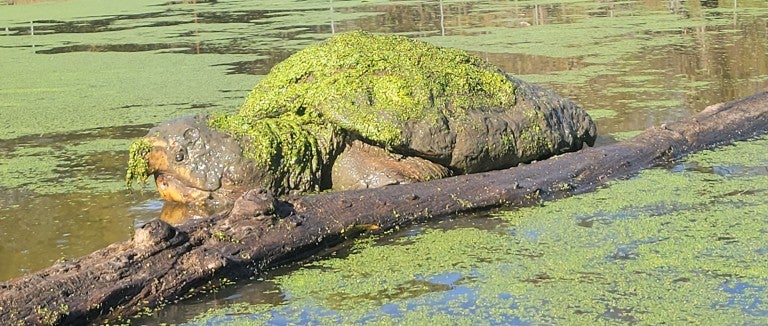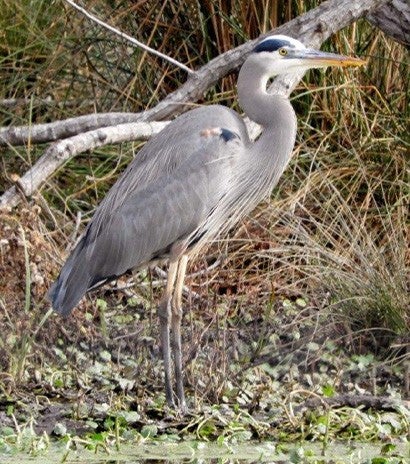Black Beauty Ranch’s most famous unofficial resident lurks out of sight in the mud at the bottom of a horse pasture pond. He weighs perhaps 150 pounds, with a spiked shell like a plated dinosaur’s and a massive jaw. To catch food, he lies in wait, opening his mouth wide to reveal a worm-like protuberance on the tip of his tongue. When a fish swims in to get the “worm,” his jaw snaps shut.
Staff who have glimpsed this creature briefly surfacing call him “the kraken,” after the legendary sea monster off the coasts of Norway and Iceland. The sanctuary’s kraken is not as big as his mythical counterpart, but he belongs to one of the world’s largest species of turtle—the alligator snapping turtle, listed as threatened in Texas. Elsewhere, such turtles are killed for their meat and shells, which can be more than 2 feet long. Black Beauty Ranch’s kraken lives undisturbed.
“I love that we didn’t make him move out of the pasture when we discovered he was living in the pond,” says caregiver Emily Knight Hunter. “We allowed him to stay where he has made a good home for himself.”
Want more content like this?
This was written and produced by the team behind All Animals, our award-winning magazine. Each issue is packed with inspiring stories about how we are changing the world for animals together.
Learn MoreSubscribe

